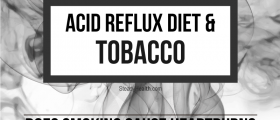Nicotine overdose, also known as nicotine poisoning, is an acute medical condition described by the symptoms of the toxic effects of consuming nicotine. In most severe cases, nicotine poisoning can be even deadly. Nicotine is an alkaloid found in the nightshade family of plants.
In low concentrations, nicotine has stimulating effects in mammals, and this is the main factor accountable for the dependence-forming properties of tobacco smoking. Nicotine addiction is very similar to the addiction to drugs such as heroin and cocaine, and this addiction is one of the hardest addictions to break.
Toxic Properties of Nicotine
Nicotine content in cigarettes has gradually increased over the years. It is estimated that 60 milligrams of nicotine, the amount found in approximately five hundred cigarettes or 200 cigars, could kill an otherwise healthy adult who is not a smoker. However, death will occur if all of the nicotine is absorbed. Even the much lower dose of 40 milligrams can be lethal for adult humans.
However, nicotine overdose usually doesn’t occur as an effect of smoking, but more frequently due to the excessive use of nicotine patches, gum, nasal sprays or oral inhalers intended for use as a part of the treatment to break nicotine addiction. The symptoms may be very severe, as the large concentration of nicotine enters the body through the skin and goes straight into the bloodstream.
Nicotine gum and patches are especially dangerous through pregnancy, as they are associated with an increased risk of having babies with birth defects. Women who use nicotine-replacement therapy in the first 12 weeks of pregnancy have a 60 percent greater risk of having babies with birth defects.
- Data from participants in randomized, double-blind, controlled trials of various formulations of NRT (Nicorette®), including patch, gum, oral inhaler, sublingual tablet, nasal spray, mouth spray, and combinations, were extracted from a clinical database.
- Eligible studies were performed between 1989 and 2010. In addition to baseline, at least 1 subsequent plasma or salivary cotinine concentration was measured, and adverse events were recorded simultaneously.
- Of 28 eligible studies, 24 were smoking cessation studies and 4 were smoking reduction studies.
- Cotinine levels that increased by >50% above baseline were recorded during treatment in 746 of 7,120 subjects (10.5%).
- Nausea was reported in 16 subjects (0.2% of the total, upper 99% confidence limit [CL] 0.4%), vomiting in 2 subjects (0.0%, upper 99% CL 0.1%), palpitations in 5 subjects (0.1%, upper 99% CL 0.2%), dizziness in 11 subjects (0.2%; upper 99% CL 0.3%), and headache in 35 subjects (0.5%, upper 99% CL 0.7%).
Symptoms of Nicotine Overdose
To avoid unpleasant and very dangerous symptoms of nicotine overdose, one should always carefully follow the package instructions and use no more nicotine than the doctor prescribes or recommends. Symptoms of nicotine poisoning usually start with headaches and difficulty breathing.
The patient may seem very pale and may feel the urge to vomit. Nausea and diarrhea are also very common. The patient will probably sweat a lot and have very irregular heartbeats. Other symptoms include lisps, stomach pain, seizures, weakness and drooling.
Nicotine Overdose Treatment
The treatment for nicotine overdose is usually successful if the medical care is provided on time. The chances that a patient will recover are very good if a patient survives nicotine poisoning during the first 4 hours. The most important thing in the course of treatment is to stop exposure to nicotine. In extreme cases, patients may need hospitalization or the administration of oral charcoal or gastric lavage.

















Your thoughts on this
Loading...